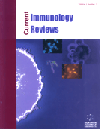-
oa New Challenges in CNS Repair: The Immune and Nervous Connection
- Source: Current Immunology Reviews (Discontinued), Volume 8, Issue 1, Feb 2012, p. 87 - 93
-
- 01 Feb 2012
Abstract
The Central Nervous System (CNS) is the organ with the least capacity for repair in mammals. Diseases of the CNS may follow developmental deficits, inappropriate environmental factors and acquired damages after maturation. The latter damages may consist of neuronal cell death, like Alzheimer's disease and/or to a lesion of the axon, like in the paraplegic patients. Hopes of obtaining a functional recovery after trauma or neurodegeneration, are very low and clinicians have very low possibilities for therapeutic interventions. The causes of the regenerative block in the adult CNS are only partially attributable to the neural component. Direct or indirect interactions with glial cells, the resident CNS immune cells, and with the extracellular matrix play a crucial role in determining the relative inability of adult CNS connections to be modified: adult neurites find themselves within an environment rich in molecules strongly inhibitory for regrowth and sprouting. A further complication arises from the fact that regenerative processes are always accompanied by an inflammatory reaction with the consequent activation of astrocytes and microglia; this activation alters the properties of the extracellular milieu. Thus, research on post lesional plasticity must not only study the molecular mechanisms active in neurons but also consider the role of glial cells and the extracellular environment.


